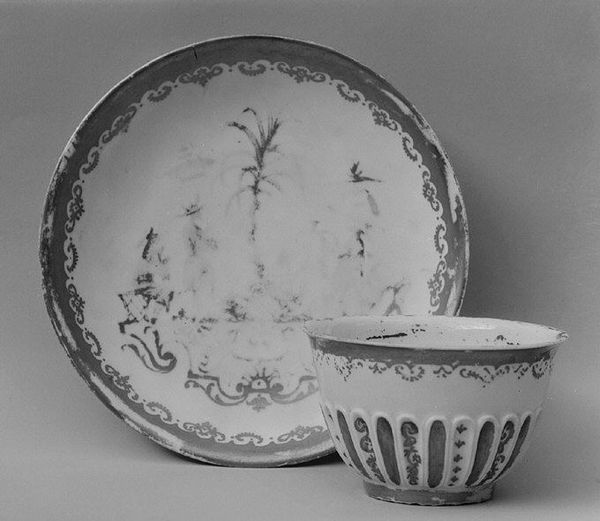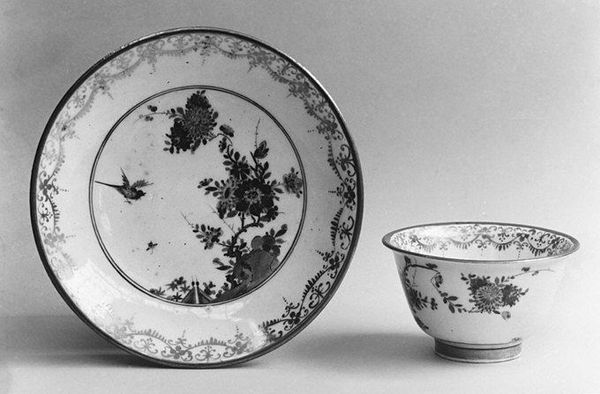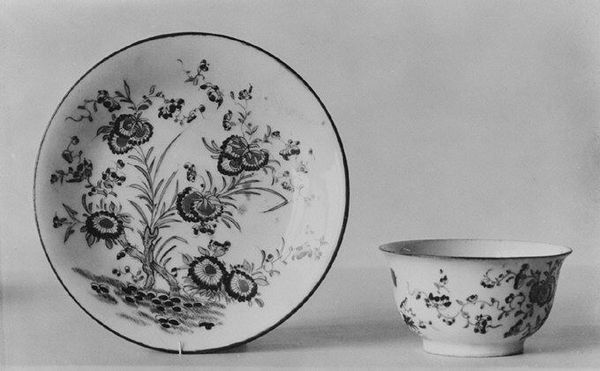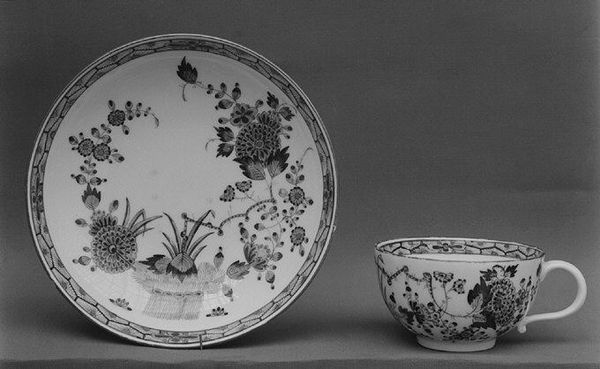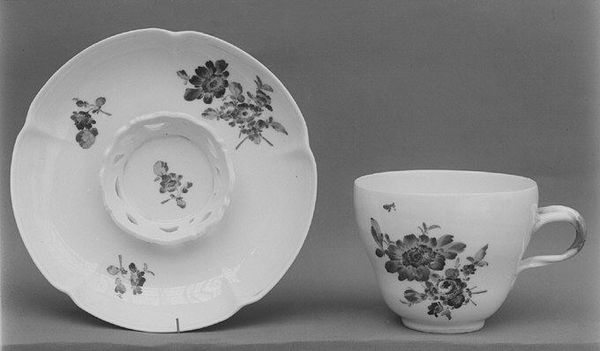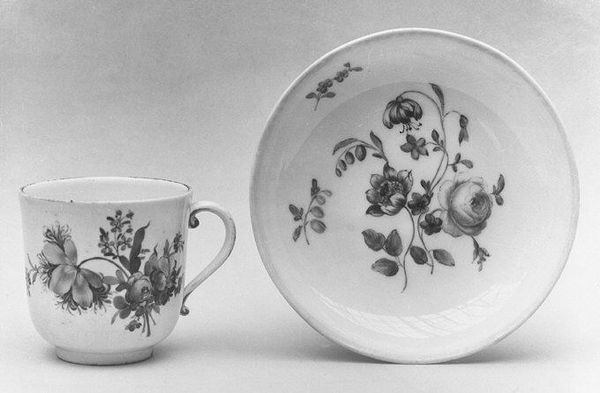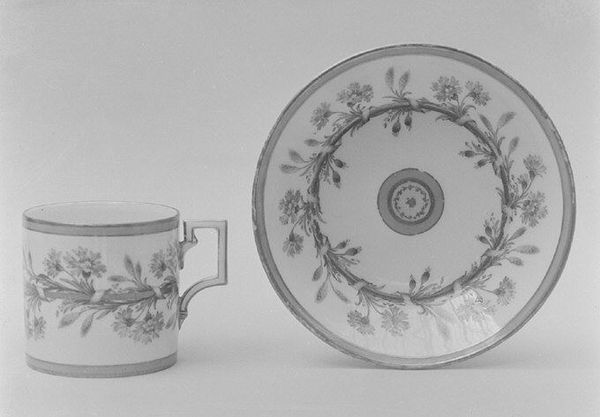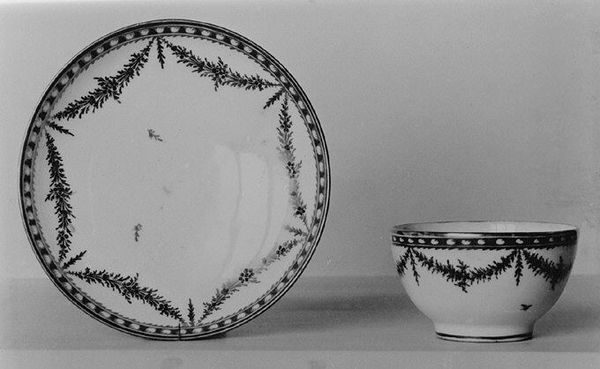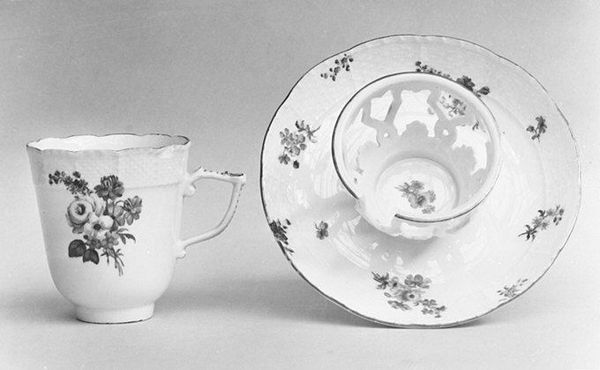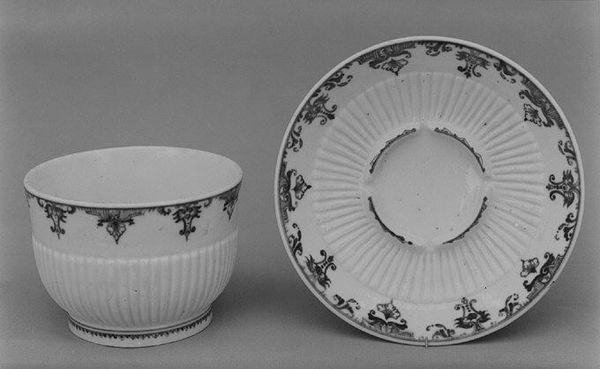
print, ceramic, porcelain, sculpture
# print
#
ceramic
#
porcelain
#
sculpture
#
decorative-art
#
rococo
Dimensions: Height (cup .20a): 1 7/8 in. (4.8 cm); Diameter (saucer .20b): 5 in. (12.7 cm)
Copyright: Public Domain
Editor: Here we have an 18th-century cup and saucer made by the Doccia Porcelain Manufactory. The ceramic surface is adorned with prints. It strikes me as such a delicate object, a small window into a more genteel era. What symbols or meanings do you find in such a piece? Curator: The floral decoration, even in monochrome, speaks volumes. In the 18th century, porcelain itself was a symbol of status and refinement. The flowers are particularly evocative. Each bloom might represent something specific: love, fidelity, remembrance. Can you sense any suggestion of those ideas? Editor: I can see how they would be intended to evoke refinement and gentle sentimentality, though those meanings have perhaps faded. What else do you notice about how the Rococo style is used here? Curator: Notice the asymmetrical balance, the light and airy feel. Rococo often rejected rigid symmetry for a more organic, playful approach. Consider what such asymmetry might suggest about the worldview of the time - perhaps a move away from strict order towards a more fluid, individualistic expression? What feelings does this departure inspire in you? Editor: That's fascinating, I hadn't considered it in that light. So, the imagery and style are also speaking to cultural values and shifts of the time. Curator: Precisely! The teacup becomes a microcosm of society, reflecting its ideals, aspirations, and even its subtle rebellions. What have you taken from seeing art in this way? Editor: I now see that it is not just pretty but meaningful. Thank you, that was really enlightening! Curator: And for me too! Each object, when closely observed, becomes a gateway into the past and offers new perspectives on ourselves.
Comments
No comments
Be the first to comment and join the conversation on the ultimate creative platform.

